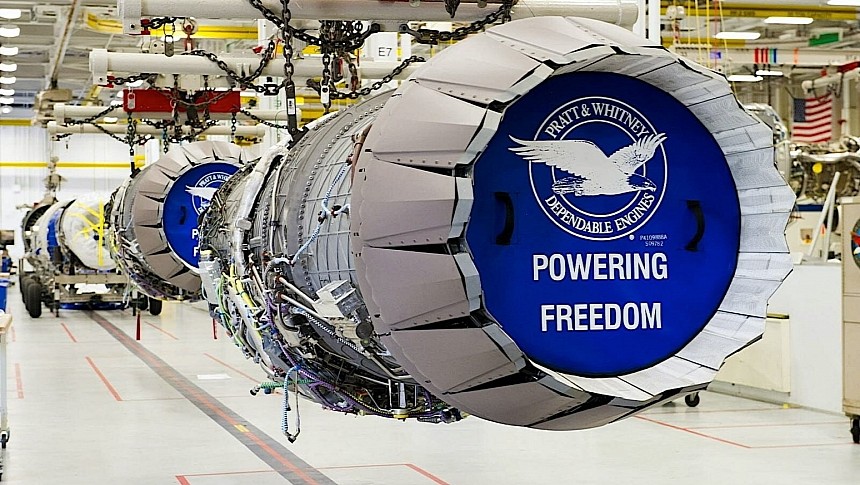The Lockheed Martin F-35 Lightning II is one of a handful of fifth-generation fighter aircraft currently in operation. Because it only recently entered service (2006) it's also a lot younger than its fourth-gen peers, the likes of the decades-old F-16. But such is the nature of our world today that even such a fresh and modern aircraft is already in need of upgrades.
The part of the F-35 presently targeted by America's military top brass is the plane's engine. The piece of hardware is called F135, and it is made by engine behemoth Pratt & Whitney.
A single unit is used to power each plane and in its current configuration the powerplant is capable of generating 43,000 pounds of thrust – more than enough to make the planes capable of reaching top speeds of Mach 1.6 and altitudes as high as 50,000 feet (15 km).
Those numbers no longer seem enough for America's aviators, so recently the plane's main operators, namely U.S. Air Force (USAF), U.S. Marine Corps, and U.S. Navy were faced with a choice: either choose another engine for the upcoming variants of the plane, or upgrade the existing one.
The latter solution was chosen earlier this year, when the 2024 budget proposal was submitted, and that means future F-35s will continue to be powered by their original engines.
Although cheaper than going for a full replacement of the F135, upgrades are not cheap either. Only prep work, meaning design engineering, technology maturation, risk reduction, and weapons system integration will cost millions.
Earlier this week Pratt & Whitney announced it had received a $66 million definitized contract modification for the work ahead, already bringing the amount of money secured for the modernization work to $180 million.
The main things about the engine that need to change are its power generation and cooling, both capabilities that need to be increased for future use.
New capabilities in this respect are needed because since the F-35 entered service more than a decade ago a lot of extra hardware, including in the form of sensors, have been added to the plane, while power levels and cooling remained unchanged.
Pratt & Whitney plans to have the required upgrades ready to enter service in 2028.
Exact details on what changes will be performed have not been provided, but they are part of an effort called Engine Core Upgrade (ECU). This is, as per engine maker, "the fastest, most cost-effective, and lowest-risk path to Block 4 capability for all global F-35 operators."
More importantly, the modifications made to the engine will be applicable to all three variants of the F-35, and will "yield $40 billion in lifecycle cost savings by avoiding disruptive and costly air vehicle changes and leveraging the current global sustainment infrastructure."
A single unit is used to power each plane and in its current configuration the powerplant is capable of generating 43,000 pounds of thrust – more than enough to make the planes capable of reaching top speeds of Mach 1.6 and altitudes as high as 50,000 feet (15 km).
Those numbers no longer seem enough for America's aviators, so recently the plane's main operators, namely U.S. Air Force (USAF), U.S. Marine Corps, and U.S. Navy were faced with a choice: either choose another engine for the upcoming variants of the plane, or upgrade the existing one.
The latter solution was chosen earlier this year, when the 2024 budget proposal was submitted, and that means future F-35s will continue to be powered by their original engines.
Although cheaper than going for a full replacement of the F135, upgrades are not cheap either. Only prep work, meaning design engineering, technology maturation, risk reduction, and weapons system integration will cost millions.
Earlier this week Pratt & Whitney announced it had received a $66 million definitized contract modification for the work ahead, already bringing the amount of money secured for the modernization work to $180 million.
The main things about the engine that need to change are its power generation and cooling, both capabilities that need to be increased for future use.
New capabilities in this respect are needed because since the F-35 entered service more than a decade ago a lot of extra hardware, including in the form of sensors, have been added to the plane, while power levels and cooling remained unchanged.
Pratt & Whitney plans to have the required upgrades ready to enter service in 2028.
Exact details on what changes will be performed have not been provided, but they are part of an effort called Engine Core Upgrade (ECU). This is, as per engine maker, "the fastest, most cost-effective, and lowest-risk path to Block 4 capability for all global F-35 operators."
More importantly, the modifications made to the engine will be applicable to all three variants of the F-35, and will "yield $40 billion in lifecycle cost savings by avoiding disruptive and costly air vehicle changes and leveraging the current global sustainment infrastructure."
























